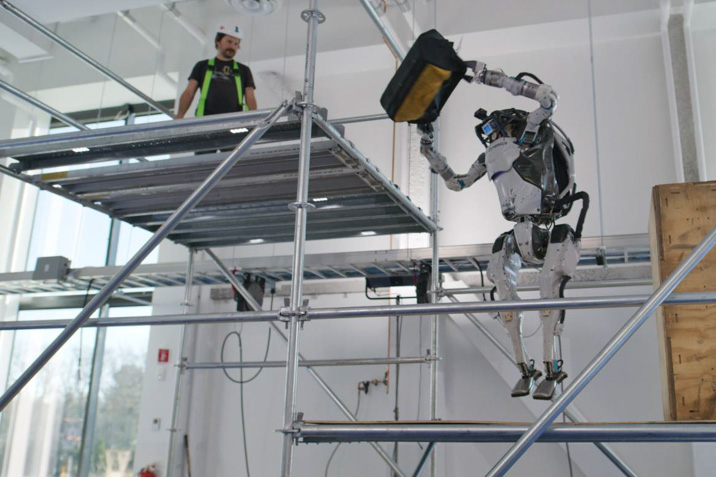While not necessarily on Australian shores just yet, robotics and 3D printing in construction is slowly making its way into the US built environment. The $500 million AI in Construction industry is anticipated to eclipse $8 billion by the end of the decade, but that doesn’t necessarily mean that human labour will be phased out.
US manufacturers and startups are developing visual feed models for remote inspection, where human involvement would come into play. AI-driven construction management software can handle scheduling, analytics and evaluate jobsite risks. Boston Dynamics, who is now owned by Hyundai, have been intent on improving human quality of life via the implementation of machine technologies.
“Anyone who is worried about robots being overly disruptive to humans, or completely replacing them, either hasn’t been on a construction site or seriously undervalues human capability,” says Boston Dynamics’ Principal Product Manager Brian Ringley, in a recent interview with Archinect.
“Whether on the topic of intelligence, dexterity, or communication, working with even the most advanced robots in the world gives you a profound appreciation for what humans are capable of.”
Ringley goes on to mention that UK company BAM now have workers supervising and directing robots around their warehouses. Boston Dynamics’ very own Spot (pictured top) and Atlas (pictured below) robots assist on construction sites in different capacities. Spot in particular, a robot dog, navigates difficult portions of the job site while capturing jobsite data. While still very much in beta mode, Boston Dynamics plans on improving the systems of both bots, with machine learning to also play an influential role in their evolution.
International practice Foster + Partners collaborated with Boston Dynamics on the Early Adopter Program for Spot. The program saw the robot utilised in the delivery of the practice’s very own studio at Battersea Roof Gardens, with Spot comparing built and design models through data compilation.

“Spot was an example of our interest in investigating disruptive technologies, and of how robotics could be used in the AEC industry to revolutionise the way we work,” says Foster + Partners Senior Partner and Applied R&D Leader, Martha Tsigkari.
“We would define a route by taking Spot to a starting point and manually driving it through the route we wished to take scans from. Each subsequent time, we would place it at the starting point, and tell it to repeat. Initially, if it encountered a permanent obstacle, it would sit down and inform the team it was unable to proceed.
“As we gave feedback to Boston Dynamics, features were added which gave us options to manually manoeuvre around the obstacle while still collecting data, or skip the scan and move to the next mission.”
While reports by Goldman Sachs paint a bleak future for the human race with robots taking over jobs, the built environment is largely different. Human perception and understanding is a major factor within design and construction. While predictable, controlled environments are ideal for robots, the ever-changing nature of construction sites and their individuality pose major issues for robots and artificial intelligence.
While robots have absolutely a role to play in the built environment, the human touch will always remain essential.
Image: https://www.freightwaves.com/news/korber-logistics-buys-majority-stake-in-logistics-robotics-company-cohesio

